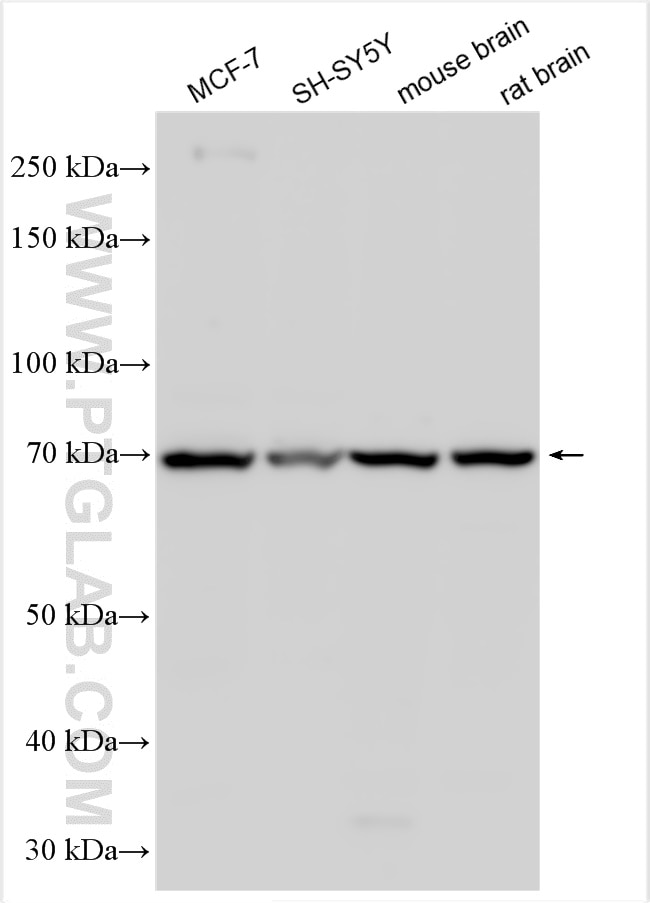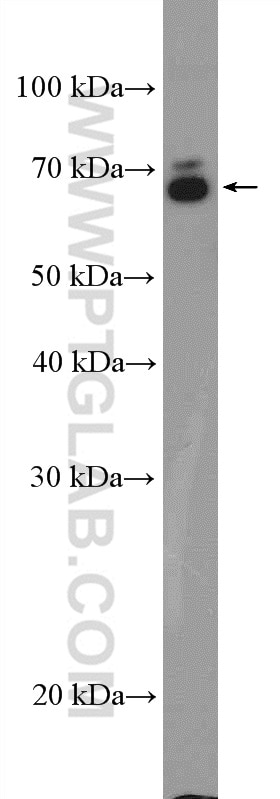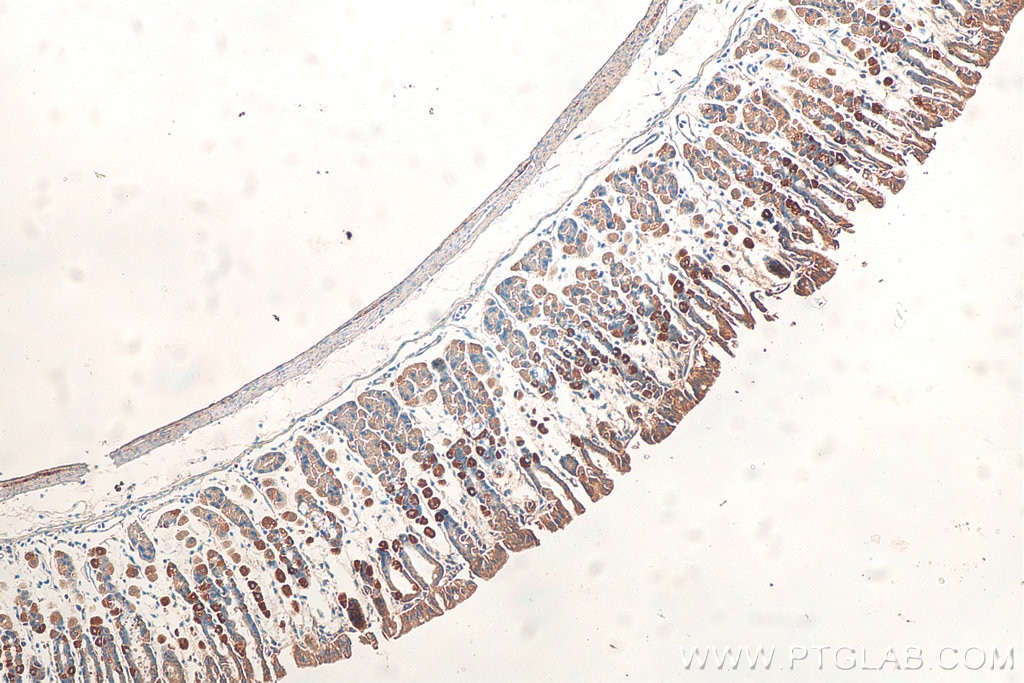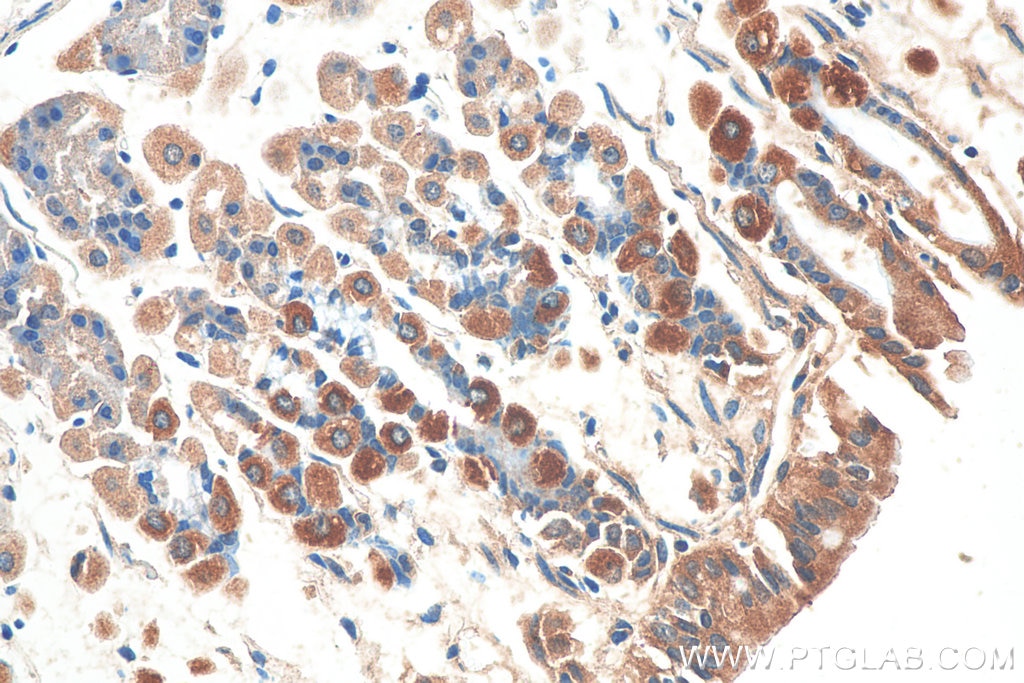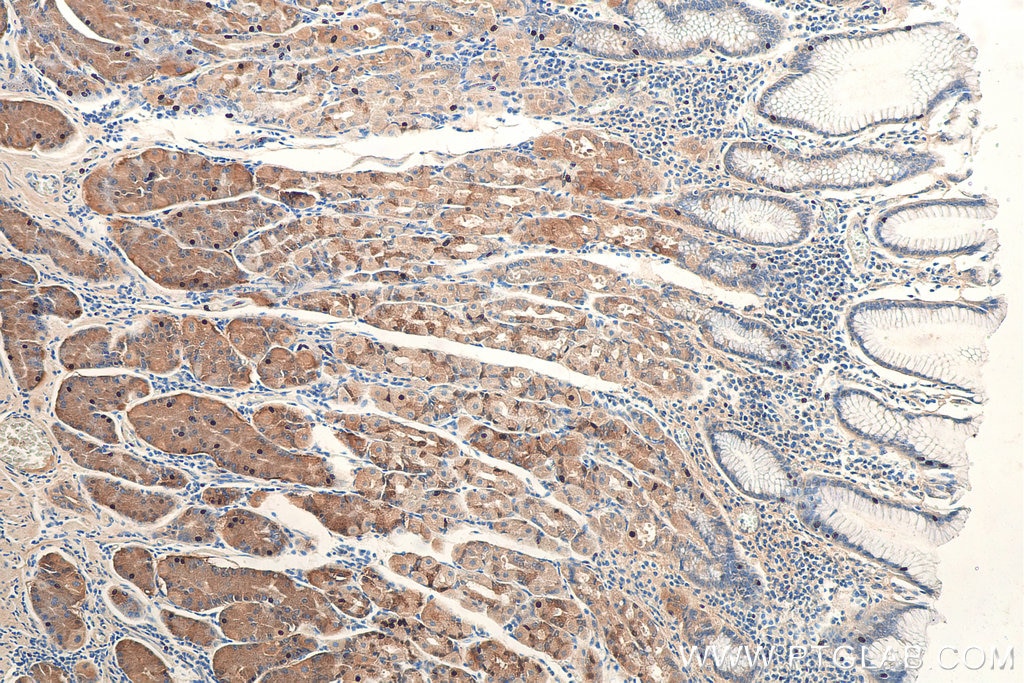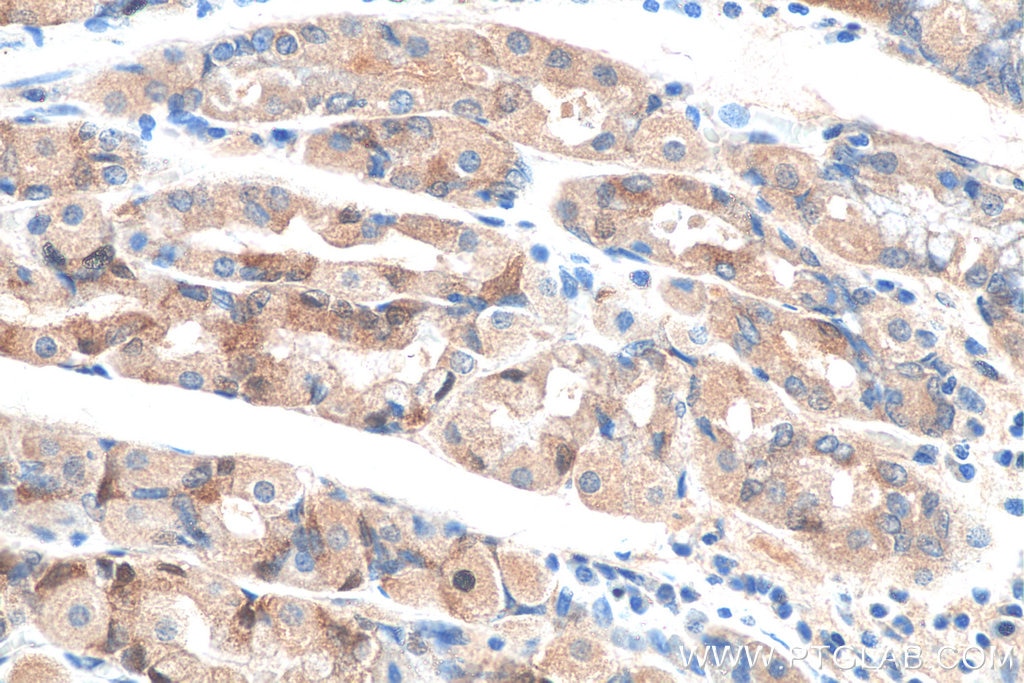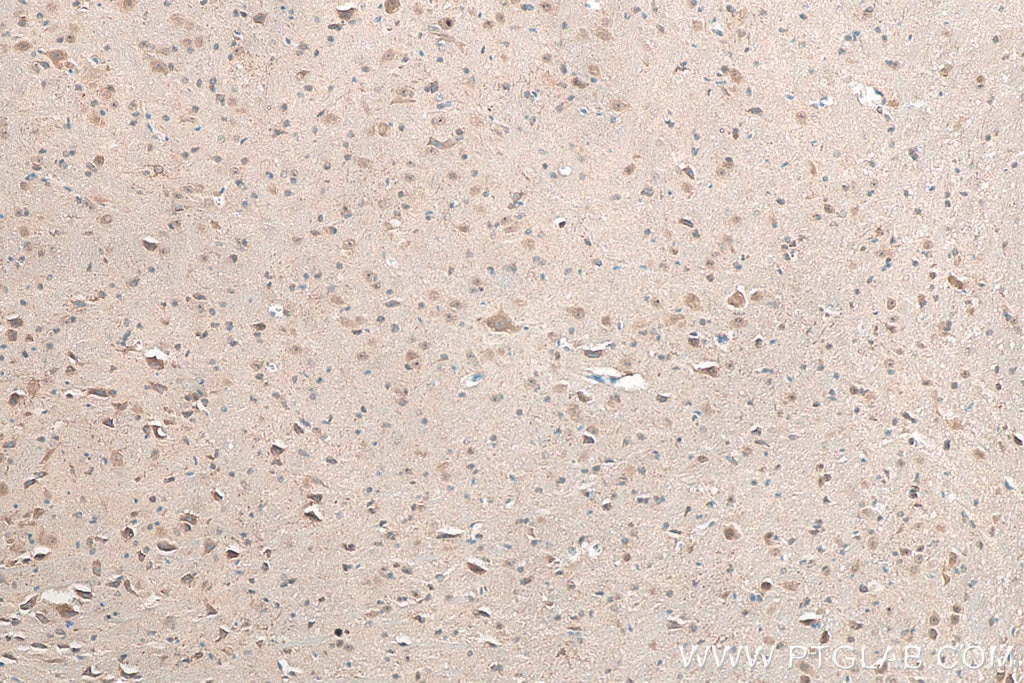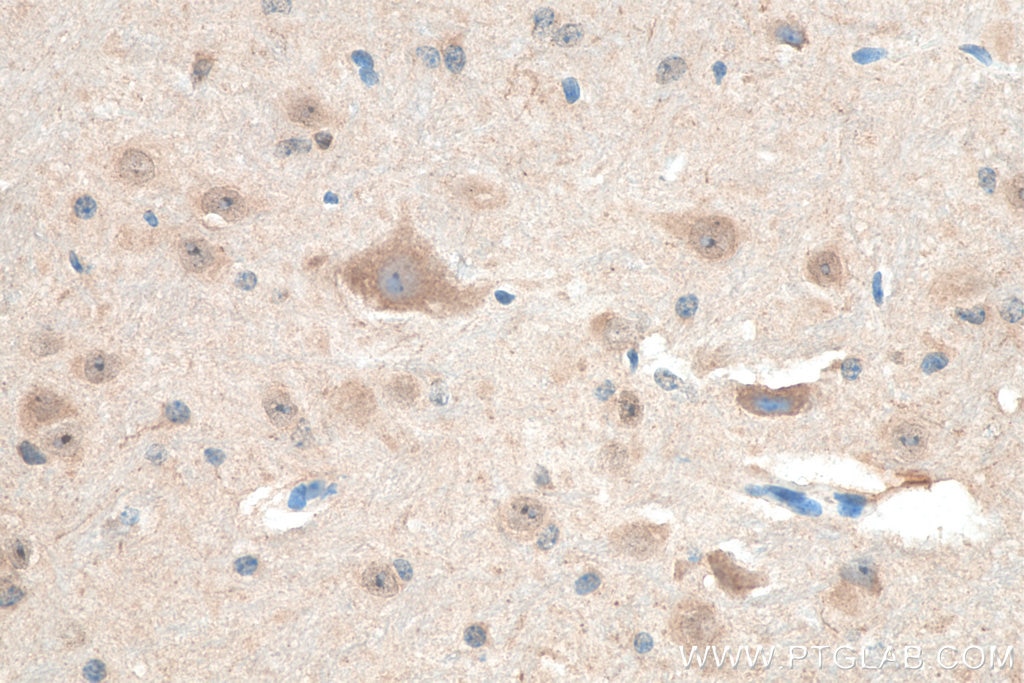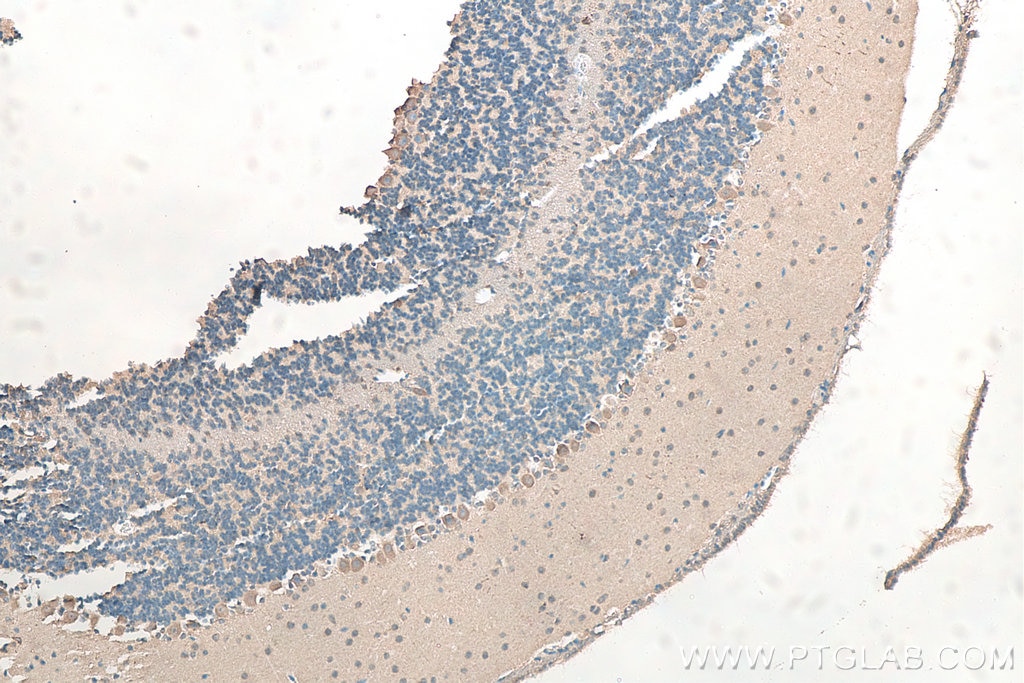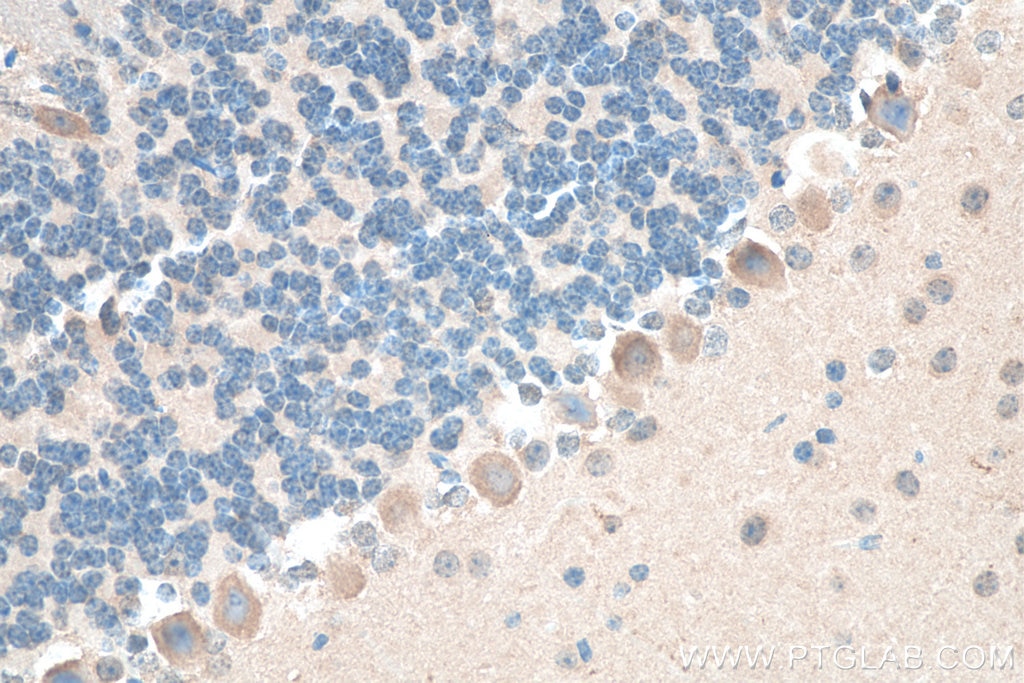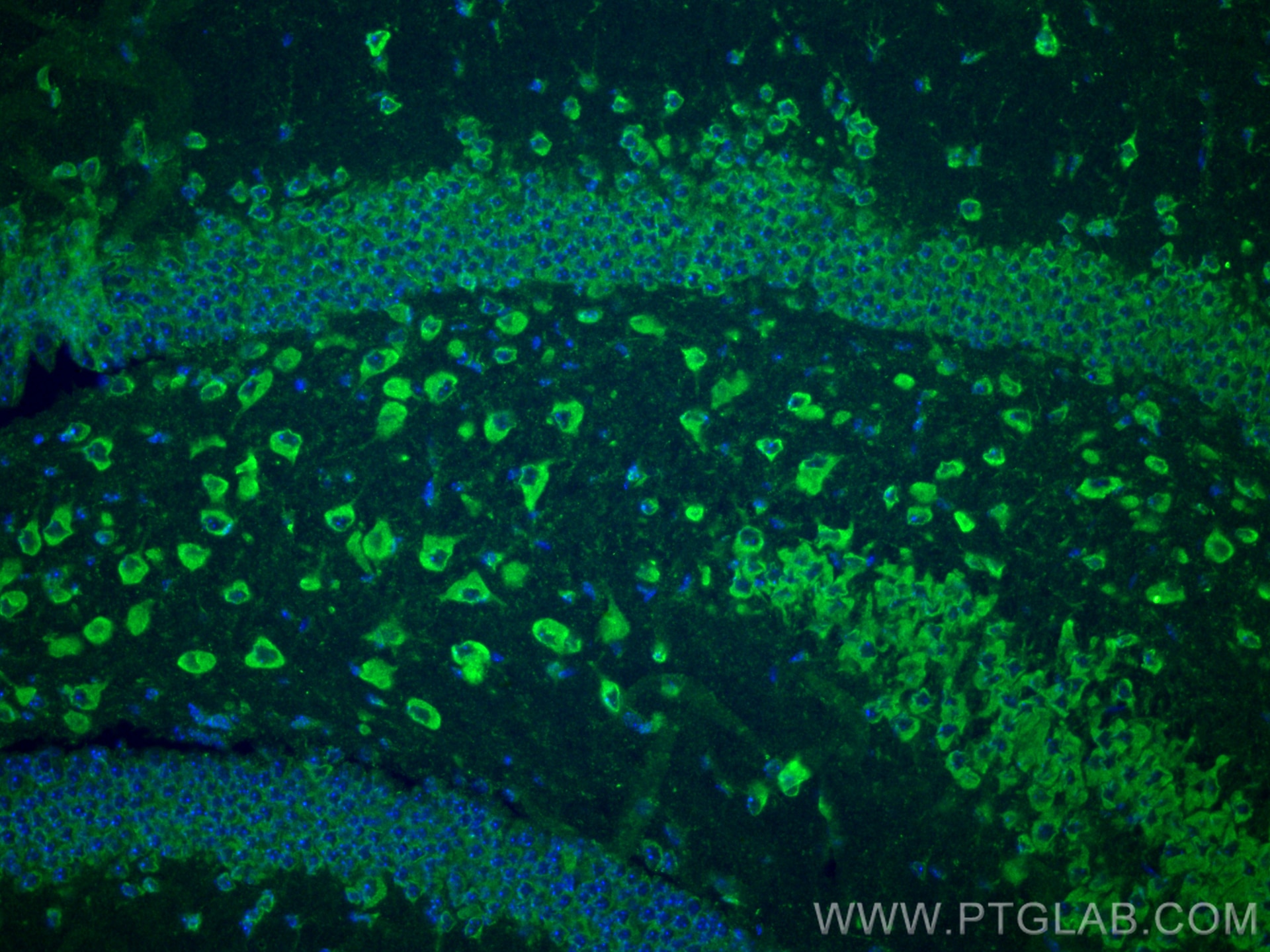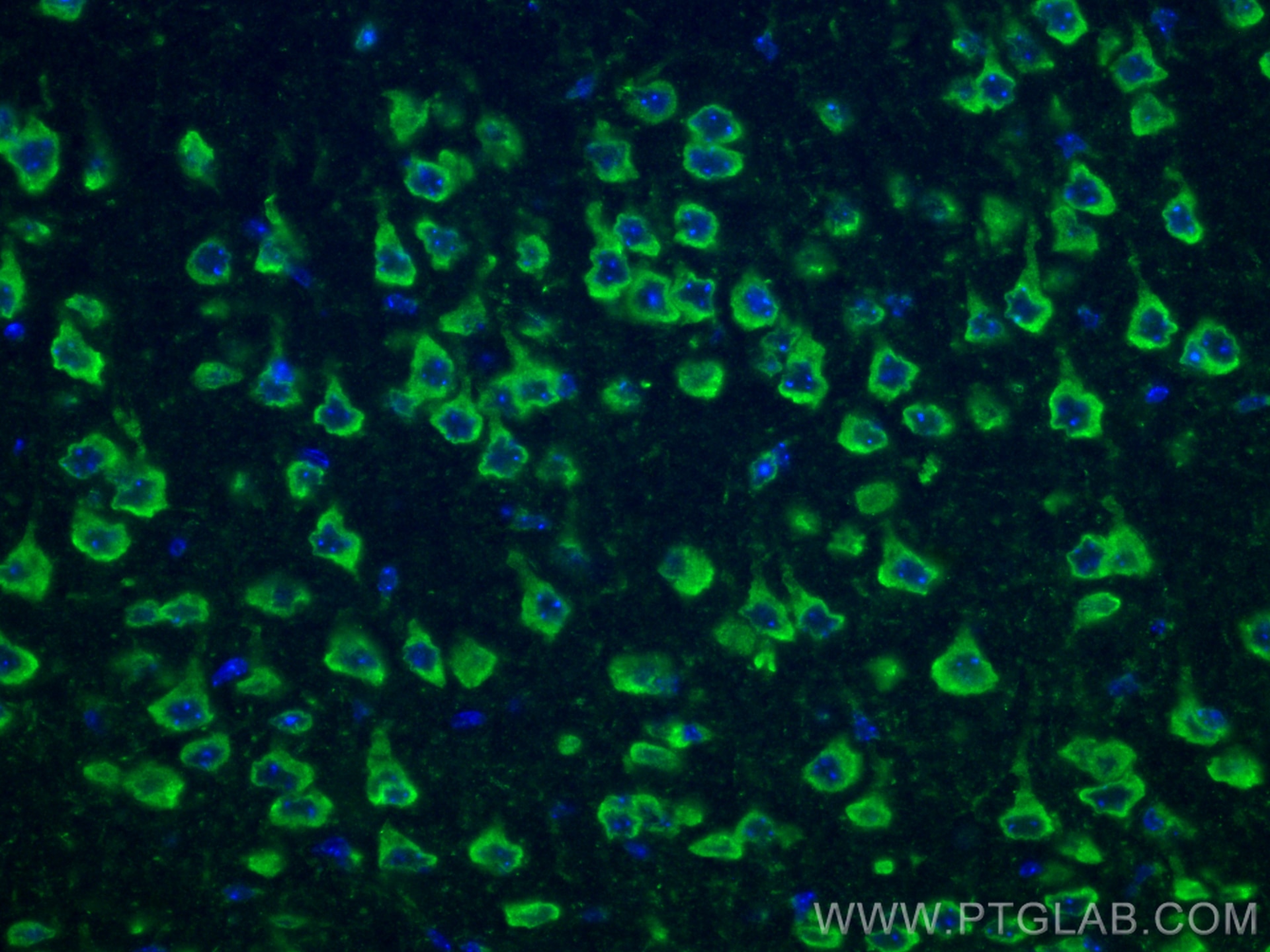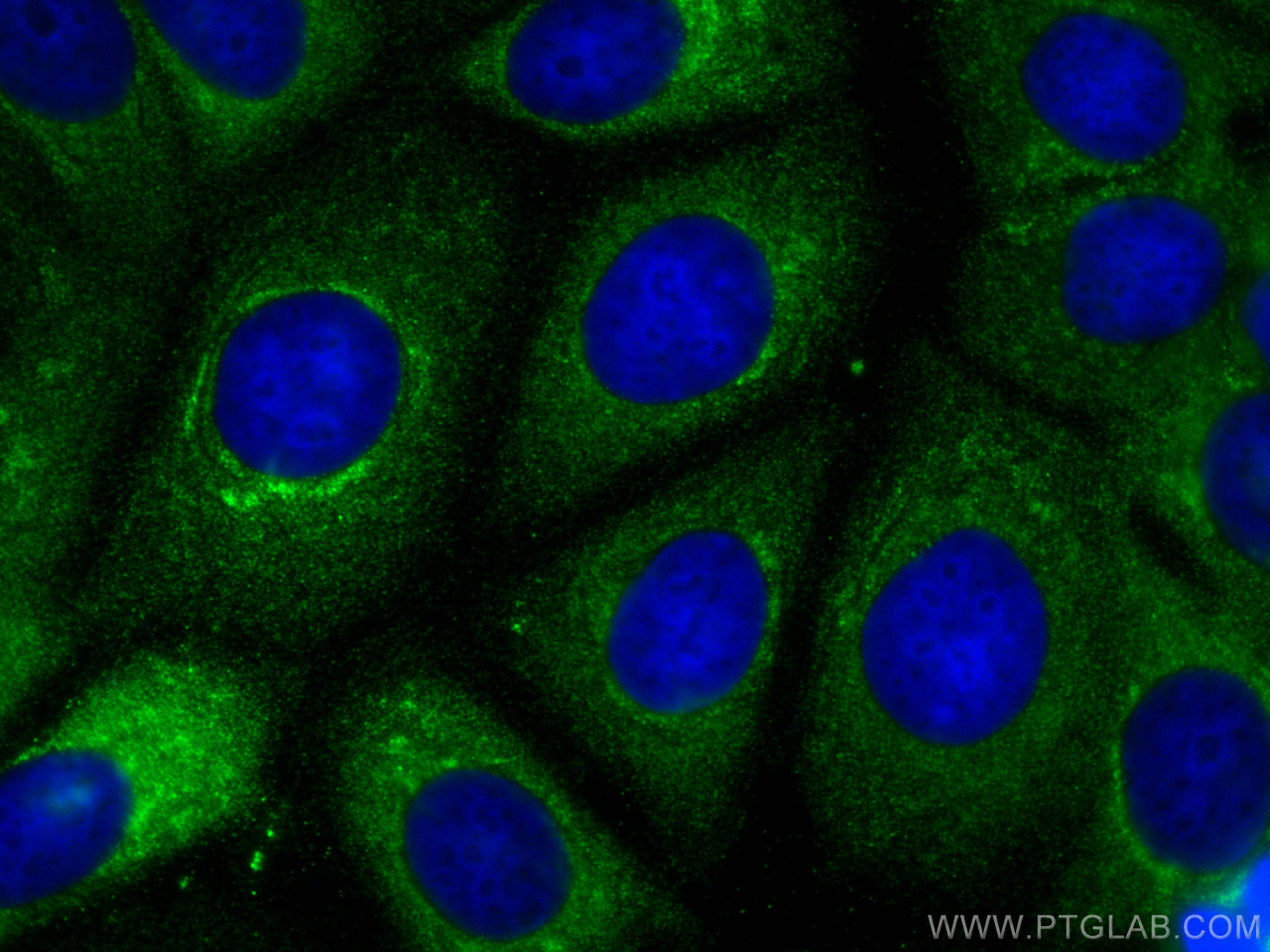Tested Applications
| Positive WB detected in | MCF-7 cells, SH-SY5Y cells, mouse brain tissue, rat brain tissue |
| Positive IHC detected in | mouse stomach tissue, human stomach tissue, mouse cerebellum tissue Note: suggested antigen retrieval with TE buffer pH 9.0; (*) Alternatively, antigen retrieval may be performed with citrate buffer pH 6.0 |
| Positive IF-P detected in | mouse brain tissue |
| Positive IF/ICC detected in | MCF-7 cells |
Recommended dilution
| Application | Dilution |
|---|---|
| Western Blot (WB) | WB : 1:500-1:2000 |
| Immunohistochemistry (IHC) | IHC : 1:50-1:500 |
| Immunofluorescence (IF)-P | IF-P : 1:50-1:500 |
| Immunofluorescence (IF)/ICC | IF/ICC : 1:200-1:800 |
| It is recommended that this reagent should be titrated in each testing system to obtain optimal results. | |
| Sample-dependent, Check data in validation data gallery. | |
Published Applications
| WB | See 11 publications below |
| IHC | See 5 publications below |
| IF | See 6 publications below |
Product Information
10527-1-AP targets NRG1, isoform SMDF in WB, IHC, IF/ICC, IF-P, ELISA applications and shows reactivity with human, mouse, rat samples.
| Tested Reactivity | human, mouse, rat |
| Cited Reactivity | human, mouse, rat |
| Host / Isotype | Rabbit / IgG |
| Class | Polyclonal |
| Type | Antibody |
| Immunogen |
CatNo: Ag0803 Product name: Recombinant human NRG1 protein Source: e coli.-derived, PGEX-4T Tag: GST Domain: 1-225 aa of BC007675 Sequence: MEIYSPDMSEVAAERSSSPSTQLSADPSLDGLPAAEDMPEPQTEDGRTPGLVGLAVPCCACLEAERLRGCLNSEKICIVPILACLVSLCLCIAGLKWVFVDKIFEYDSPTHLDPGGLGQDPIISLDATAASALWVSSEAYTSPVSRAQSESEVQVTVQGDKAVVSFEPSAAPTPKNRIFAFSFLPSTAPSFPSPTRNPEVRTPKSATQPQTTETNLQTAPKLSTS Predict reactive species |
| Full Name | neuregulin 1 |
| Calculated Molecular Weight | 70 kDa |
| Observed Molecular Weight | 70 kDa |
| GenBank Accession Number | BC007675 |
| Gene Symbol | NRG1 |
| Gene ID (NCBI) | 3084 |
| RRID | AB_2154659 |
| Conjugate | Unconjugated |
| Form | Liquid |
| Purification Method | Antigen affinity purification |
| UNIPROT ID | Q02297 |
| Storage Buffer | PBS with 0.02% sodium azide and 50% glycerol, pH 7.3. |
| Storage Conditions | Store at -20°C. Stable for one year after shipment. Aliquoting is unnecessary for -20oC storage. 20ul sizes contain 0.1% BSA. |
Background Information
Neuregulin 1 (NRG1) is a trophic factor that has been implicated in neural development, neurotransmission, and synaptic plasticity. NRG1 has multiple isoforms that are generated by usage of different promoters and alternative splicing of a single gene. NRG1 and its receptor ErbB tyrosine kinase are expressed not only in the developing nervous system, but also in the adult brain. Studies has been reportrd, the full-length type III NRG1 (NRG1 isoform SMDF) is more than 110 kDa, the 70-75 kDa band is a membrane bound form and it can be cleaved by an unknown enzyme releases the ∼45 kDa secreted form of NRG1(PMID: 21047912, PMID: 11425901). The immunogen of this antibody is against NRG1 isoform SMDF.
Protocols
| Product Specific Protocols | |
|---|---|
| IF protocol for NRG1, isoform SMDF antibody 10527-1-AP | Download protocol |
| IHC protocol for NRG1, isoform SMDF antibody 10527-1-AP | Download protocol |
| WB protocol for NRG1, isoform SMDF antibody 10527-1-AP | Download protocol |
| Standard Protocols | |
|---|---|
| Click here to view our Standard Protocols |
Publications
| Species | Application | Title |
|---|---|---|
ACS Biomater Sci Eng Sericin Nerve Guidance Conduit Delivering Therapeutically Repurposed Clobetasol for Functional and Structural Regeneration of Transected Peripheral Nerves | ||
Ecotoxicol Environ Saf Prenatal di-(2-ethylhexyl) phthalate exposure induced myocardial cytotoxicity via the regulation of the NRG1-dependent ErbB2/ErbB4-PI3K/AKT signaling pathway in fetal mice. | ||
J Exp Clin Cancer Res miR-296-5p suppresses EMT of hepatocellular carcinoma via attenuating NRG1/ERBB2/ERBB3 signaling. | ||
Am J Physiol Renal Physiol ErbB4 deletion accelerates renal fibrosis following renal injury. | ||
Folia Neuropathol miR-143-3p inhibition promotes neuronal survival in an Alzheimer's disease cell model by targeting neuregulin-1. |
